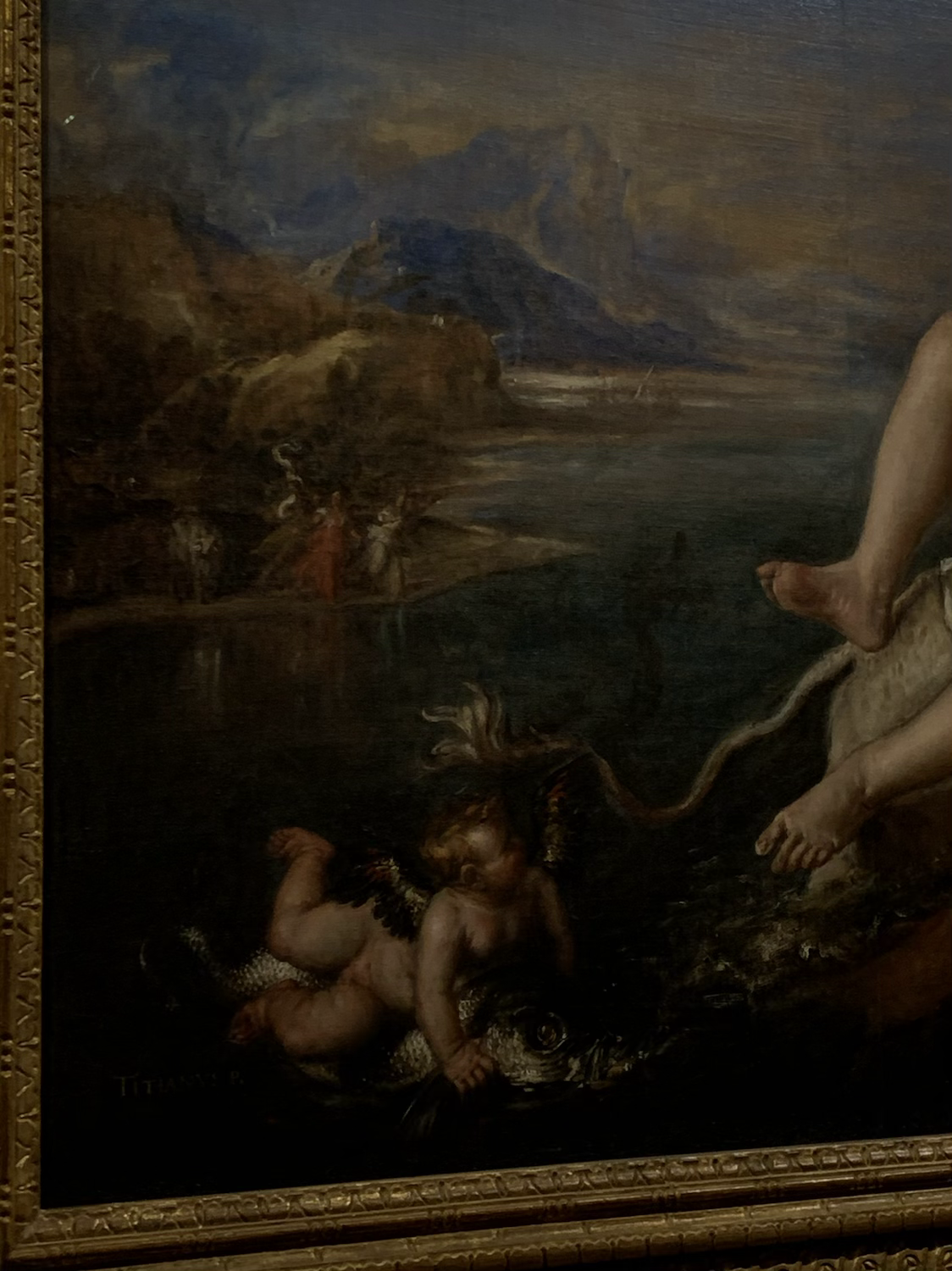Troy: myth and reality- a must see exhibition!
- Viola

- Dec 1, 2019
- 5 min read
SPOILER ALERT- beware!
As soon as you enter the exhibition, you are hurled into a quiet world with nothing except you, Homer and Virgil and what's left of the greatest pieces of literature (and its influence) everywhere around you. In fact, in the first room you are immediately drawn to the huge, dramatic abstract painting right in front of you; the vengeance of Achilles by Cy Twombly

What we really loved about this exhibition was not only the abundance of things to look at, be it quotes on the wall, paintings, sculptures, vases, or anything else, but also the modern influence the exhibition revealed of the Homeric and Vergilian texts. For every avid classicist that was there, there was also a tourist or someone who knew nothing about the texts. And by the end, they were stocking up on these books from the gift shop, desperate not to leave the beautiful and complex world of Troy they had just discovered. The exhibition began with the story of how discord, Έρις, created the Trojan war, right from the judgement of Paris.
Έρις

The story of Eris was explained using the artefacts around them, even using modern technology to pick out the main points of the story and bring the artefact to life (as seen in the video). On the left, there is the goddess herself, arguably the source of the 10-year-long war. This section explained Eris' fury at not being invited to Peleus and Thetis' wedding and her presentation of the golden apple with the inscription 'for the most beautiful' to create discord. The apple is then fought over by 3 goddess, and Paris picked as the judge. Paris picks Aphrodite after she promises to give him the world's most beautiful woman; Helen of Troy. The focus of the exhibiton then cleverly shifts to Helen and Paris.
Helen and Paris
We are then made to question whether Helen's departure with Paris was voluntary, making her an evil women who comitted adultry and arguably the cause of the war, or whether she was abducted. One Roman relief based on Greek models c 100BC- AD100 depicts a scene where the god themselves are to blame, with a modest-looking Helen being coaxed by Aphrodite and Eros plants desire in Paris. (left). Other scenes such as the two vases below encapuslate the love scene of Paris falling in love with the exceptionally beautiful daughter of Zeus and Leda.
The rage of Achilles
The storyline then jumps forward to the tenth year of the battle (a familiar time jump to all classicists) and begins to tell the story of the events leading up to the destruction of Troy, including the rage of Achilles in more depth. It explains that godlike Achilles, the greatest of Greek warriors, refuses to fight because king Agamemnon has taken his war prize, the captive Briseis. The Greeks began to lose very badly and in desperation Achilles' companion, Patroclus, takes his armour and pretending to be Achilles goes into battle but is killed by Hector. Thus Achilles, in a fury of grief reenters the battle and kills the Trojan Prince, Hector. He famously desecrates the corpse until the King of Troy, Priam, begs for his son's body back. Moved by pity, Achilles' anger finally subsides. This is, in essence, the biggest event in the Iliad.

There are also some more light-hearted pieces, such as Ajax and Achilles passing the time, which you can't help but smile at. The beauty and innocence of this piece, of two young men, fully clad in armour draws sympathy from even the most encouraging warmongers and a wish that these men, regardless of whether they were real, could've had some simplicity.
This piece is perfectly placed to offer some relief before heading on to see the heartbreaking, violent sculptures of Achilles dragging Hector's dead body, with many depictions on the sarcophagus' and a modern interpretation (middle) of Hector's body being restored by the gods, perhaps offering it a bit of piece. Unfortunately, as is the case with many things, Hector's corpse is missing in the left sarcophagus but in my opinion, it is not even needed, with Achilles' arrogance high stature and cruel look being enough to cause shivers to run down your spine.
Fall of Troy
Then of course, came the fall of Troy (Άλωσις). Again, the exhibiton seamlessly interweaves the introduction of Aeneas escaping the burning Troy, with the famous picture of his father, Anchises, on his back and holding his son, Ascansius' hand. And yes, both the tiny coins on the left and right have a mini Aeneas with his mini family fleeing Troy.

The exhibition obviosuly pays hommage to the brilliant invention of the Greek horse and then continues to follow Odysseus on his journey, or return (Νόστος). A bust of Odysseus is the first thing to grab your eye, with the description explaining that his deep-set eyes and furrowed brows depict him as a man of intellect. His beard symbolises experience and wisdom of age- 'Odysseus is an unusual hero, famous for his cunning'. We see images of Odysseus passing the sirens, Scylla and Charybdis and his escape from the cyclops, and lastly his defeat of the suitors back in Ithaca with his trusty bow and arrow.
Modern interpretations
The style of the exhibition changes again here, showing a new focus on the modern interpretation of the Odysseus' and Aeneas' journeys, calling them metaphors for difficult jouneys in life. It says of Aeneas that his flight from Troy with his family made him 'a powerful symbol of duty and virtue for medieval and Renaissance Europeans'. and Odysseus' determination to reach home for Penelope stood for 'marital faithfulness'. Odysseus must battle his fears as a displaced traveller, a reletable struggle. Here are some of our favourite artworks:
Heroes
The exhibition itself explains this section perfectly: 'The stories of Achilles and Hector raise questions about the nature of Heroism and the cost of war'.
left to right; Thetis dipping Achilles in the river styx, Achilles dying after having been shot with an arrow, Achilles dragging Hector's body and Hector leaving his wife and child.
The heroes of the Epics have many flaws and positive attributes, but they are complex characters who allow an insight into both the ancient world and human nature.
Women of the Trojan war
The last part of the exhibition focusses on the women; Helen, the pawn in a divine quarrel, Iphigenia, the sacrifice for wind, Cassandra who becomes enslaved and Clytemnestra who acts fearlessly but pays with her life.
Helen's beauty has been reinterpreted throughout the ages, and there are many beautiful painting and sculptures on this woman
What is really striking however, is the seemingly androgynous Clytemnestra, as of course this is the only way a woman would ever be able to kill a man.
And just as if all this isn't enough (evident by our extremely long post, so well done if you made it to the end!), when you leave you are struck by the glory of Achilles' shield, both the old and the new:
So if there’s one thing we recommend doing this week, or next week it’s going to see this exhibition.
until next time,
Zoe and Viola




















































Comments